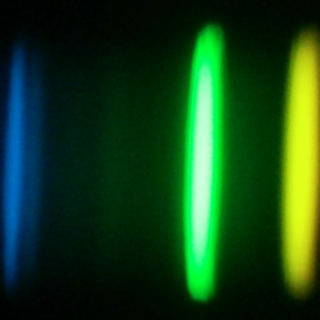Bibcode
Schlafly, Edward F.; Kirkby, David; Schlegel, David J.; Myers, Adam D.; Raichoor, Anand; Dawson, Kyle; Aguilar, Jessica; Allende Prieto, Carlos; Bailey, Stephen; BenZvi, Segev; Bermejo-Climent, Jose; Brooks, David; de la Macorra, Axel; Dey, Arjun; Doel, Peter; Fanning, Kevin; Font-Ribera, Andreu; Forero-Romero, Jaime E.; García-Bellido, Juan; Gontcho A Gontcho, Satya; Guy, Julien; Hahn, ChangHoon; Honscheid, Klaus; Ishak, Mustapha; Juneau, Stéphanie; Kehoe, Robert; Kisner, Theodore; Kremin, Anthony; Landriau, Martin; Lang, Dustin A.; Lasker, James; Levi, Michael E.; Magneville, Christophe; Manser, Christopher J.; Martini, Paul; Meisner, Aaron M.; Miquel, Ramon; Moustakas, John; Newman, Jeffrey A.; Nie, Jundan; Palanque-Delabrouille, Nathalie.; Percival, Will J.; Poppett, Claire; Rockosi, Constance; Ross, Ashley J.; Rossi, Graziano; Tarlé, Gregory; Weaver, Benjamin A.; Yèche, Christophe; Zhou, Rongpu; DESI Collaboration
Referencia bibliográfica
The Astronomical Journal
Fecha de publicación:
12
2023
Número de citas
193
Número de citas referidas
135
Descripción
The Dark Energy Spectroscopic Instrument (DESI) survey is a spectroscopic survey of tens of millions of galaxies at 0 < z < 3.5 covering 14,000 sq. deg. of the sky. In its first 1.1 yr of survey operations, it has observed more than 14 million galaxies and 4 million stars. We describe the processes that govern DESI's observations of the 15,000 fields composing the survey. This includes the planning of each night's observations in the afternoon; automatic selection of fields to observe during the night; real-time assessment of field completeness on the basis of observing conditions during each exposure; reduction, redshifting, and quality assurance of each field of targets in the morning following observation; and updates to the list of future targets to observe on the basis of these results. We also compare the performance of the survey with historical expectations and find good agreement. Simulations of the weather and of DESI observations using the real field-selection algorithm show good agreement with the actual observations. After accounting for major unplanned shutdowns, the dark time survey is progressing about 7% faster than forecast, which is good agreement given approximations made in the simulations.
Proyectos relacionados

Abundancias Químicas en Estrellas
La espectroscopía de estrellas nos permite determinar las propiedades y composiciones químicas de las mismas. A partir de esta información para estrellas de diferente edad en la Vía Láctea es posible reconstruir la evolución química de la Galaxia, así como el origen de los elementos más pesados que el boro, forjados principalmente en los interiores
Carlos
Allende Prieto